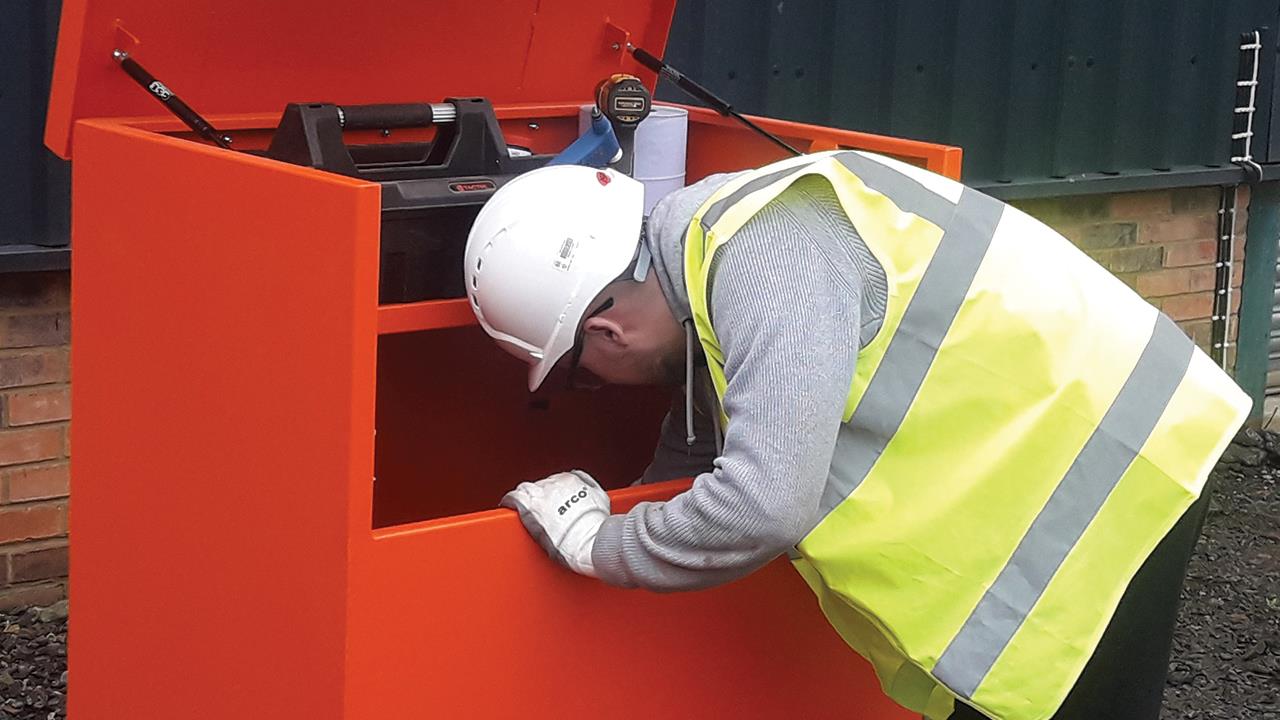

Michael Brown, Product Design Director at Metal and Modular, discusses measures to tackle tool theft from building sites.
According to research based on figures from police forces across the UK, tool theft from site costs contractors almost £95 million each year. It’s a problem that’s getting worse, as opportunist thieves take their chances with site security to lift equipment that is portable, saleable and, most of all, valuable.
The value of any piece of equipment is not just in the money required to replace it. The real value – and cost – is the loss of a tool that is fundamental to the operative’s job and, therefore, not only needs to be replaced but needs to be replaced quickly.
It’s often the knock-on consequences of tool theft that are the most damaging. Clearly, the cost of replacement is onerous, but the more high value and specialist the equipment, the harder it is to replace. No-one wants to spend valuable work time travelling from one trade counter to the next looking for a like-for-like replacement for a tool that’s been stolen. And, in some cases, there may be more than one item to find.
One of the incidents that inspired our Tool Vault range was the theft of 22 cordless drill batteries from a site in a single theft. Finding one replacement was not a major undertaking, but replacing 22 batteries of exactly the same make and model, each with a hefty price tag, was nigh on impossible.
The impact of a theft like that can be far-reaching. Without the correct tools, operatives can be forced to do alternative tasks that can tip the programme off schedule. The tighter the programme and the nearer to completion the project, the more serious this can be.
Potentially, it can result in workers not being paid because they have been unable to work, financial penalties due to site delays, or even contra-charges imposed by the main contractor if an alternative sub-contractor has to be brought in to keep the programme on track.
Prevention is better than cure. Installation of security systems is a standard part of any site setup, with hoardings, secure gates, CCTV, and access control systems all helping to reduce the risk of theft and trespass. Often, however, lightweight, portable equipment remains an easy target for casual thieves and site break-ins, so it’s essential to take additional steps to protect these vulnerable items, over and above any site-wide security.
Tool vaults are a robust and convenient solution for protecting tools and small items of equipment on-site, and can even be used to safeguard workers’ personal possessions, such as mobile phones. It’s important to look for the right model to suit the site, however, and ensure that the tool vault chosen offers the right level of flexibility and protection for your needs.
The first consideration is size; selecting the right size to meet the needs of your team involves considering both the number of operatives on-site and the amount and size of equipment they have. Even on larger sites, it may be more appropriate to use two or more smaller units than to locate everything centrally, depending on site layout and deployment of staff. The hire specialist will be able to advise on the best solutions for the contractor’s requirements.
Manoeuvrability is also key, as this enables the vault to be deployed where it is needed throughout the project, and tucked away neatly. Castoring wheels will enable movement in any direction and a footbrake should be included to ensure the unit is fixed in place and cannot roll.
As security is the main purpose of the unit, it should have a robust locking system. For example, our medium and large Tool Vaults have key-operated, five-lever deadlocks specified to the British Standard, while the small Tool Vault has two fixed padlocks. Tool vaults should also be designed to safeguard against forced entry, so it’s advisable to select a unit with anti-theft doors that prevent the unit from being forced open with a crowbar.
For sites where only a small amount of hand tools need to be stored securely but small fittings and components also need to be stored, a secure fittings cabinet with anti-theft doors and a robust locking system can be a useful alternative to a tool vault. Fittings can be stored in storage bins on shelves, helping operatives find what they need quickly and easily, and aiding stock checking.
It’s sad that measures have to be put in place to prevent tool theft from sites but this continues to be a fundamental threat to costs and productivity. There are, however, simple solutions to prevent it from happening.
If you'd like to keep up-to-date with the latest developments in the heating and plumbing industry, why not subscribe to our weekly newsletters? Just click the button below and you can ensure all the latest industry news and new product information lands in your inbox every week.